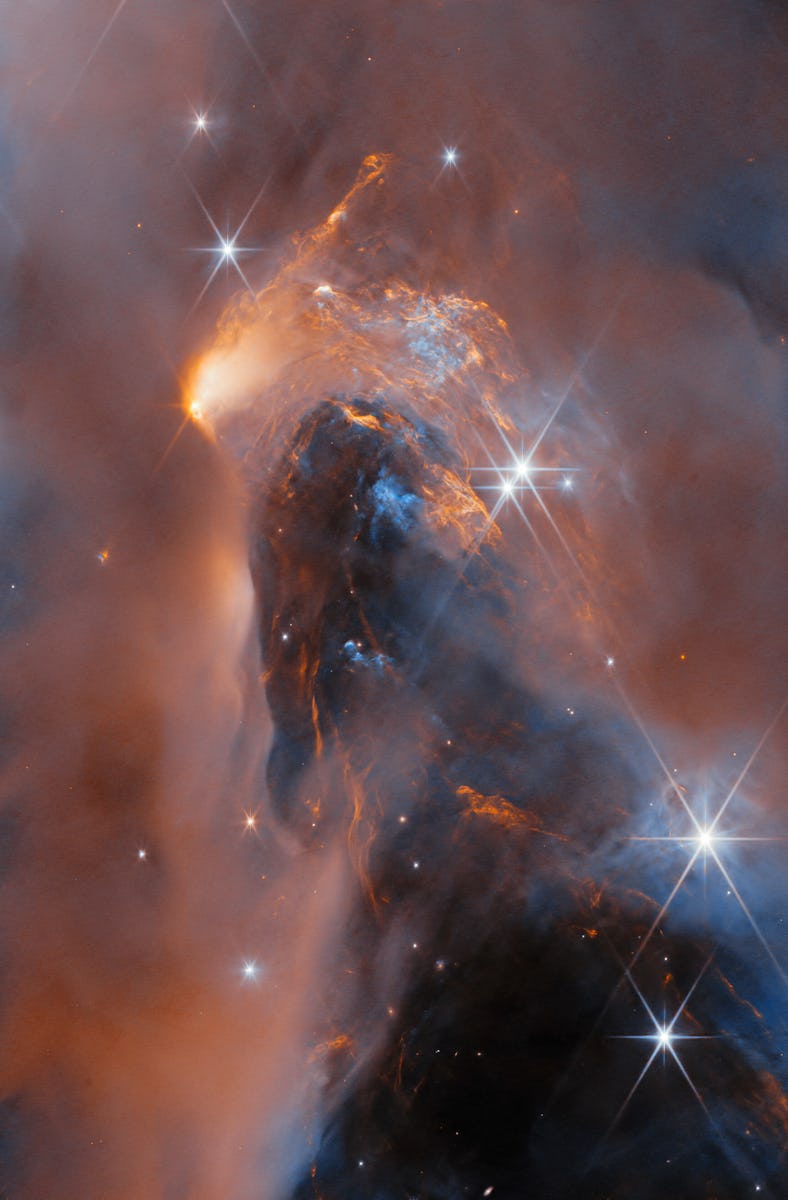The Webb Telescope Just Identified 6 Giant Gaseous Planets That Are More Massive Than Jupiter
And these strange worlds may be a lot more common than we thought.

Rogue planets may be more common than we thought, and they may form alone in the void in the same way stars do, suggests a recent study.
We think we know how the universe is structured: Moons orbit planets, and planets orbit stars. But rogue planets don’t play by the rules; they drift alone through the darkness, not bound to a star’s gravity. And these lonely rebel worlds may make up about 10 percent of celestial objects, not just rare flukes of nature.
The James Webb Space Telescope (JWST) peered into a nearby star cluster and found a handful of rogue gas giants — including one with its own disk of dust swirling around it. The results suggests that rogue planets may not only be worlds that got kicked out of their star systems, but worlds that coalesce out of clouds of interstellar gas in the same way stars do — just smaller.
Johns Hopkins University astrophysicist Adam Langeveld and his colleagues published their work in The Astronomical Journal.
This is JWST’s latest image of NGC 1333, a stellar cluster about 1,000 light years away, where new stars — and new rogue planets — are still being born.
Lonely Planets Club
Langeveld and his colleagues surveyed a cluster of stars called NGC 1333, which exists 1,000 light years away in the constellation Perseus, with JWST’s Near Infrared Imager and Slitless Spectrograph (NIRISS) instrument. They found six gas giants — each between five and 10 times more massive than Jupiter — drifting through space on their own, not orbiting a star. One of these lonely worlds even had a disk of dust orbiting it, as if in the process of forming its own little family of planets (or moons). And based on their observations, Langeveld and his colleagues say rogue planets, once thought to be rare flukes of nature, might make up about 10 percent of the objects in the cluster.
We know that stars form when dense clumps of gas and dust in clouds called nebulae collapse under their own gravity, creating enough heat and pressure at their centers to kickstart nuclear fusion. And we know that sometimes, a clump of material can form an object that’s just on the threshold of being able to start burning as a star, but doesn’t have quite enough mass to get there: a brown dwarf. But astronomers weren’t sure whether even smaller objects, like giant gas planets, could form the same way.
The team of astrophysicists used JWST “to search for the faintest members of a young star cluster, seeking to address a fundamental question in astronomy: how light an object can form like a star?” says Johns Hopkins University astrophysicist Ray Jayawardhana, the senior author of the recent paper, in a recent statement. “It turns out the smallest free-floating objects that form like stars overlap in mass with giant exoplanets circling nearby stars.”
The smallest rogue planet Langeveld and his colleagues spotted, a gas giant about 5 times the mass of Jupiter (or 1,600 times the mass of Earth, if you prefer), is an important clue. It sits at the heart of a swirling disk of gas and dust, which looks exactly like the disks that form around newborn stars, where material eventually coalesces into planets. That suggests that the planet probably formed like a star, just from a smaller cloud of gas and dust. And it may be forming its own miniature system, like Jupiter or Saturn with their swarms of moons.
In other words, rogue planets may not always be planets that formed in orbit around a star like our Sun, only to get kicked out of the star system by a close encounter with a sibling planet or a passing star (which may have happened at least once in our own Solar System’s history). Instead, they can apparently spawn all alone, from much smaller clouds of gas than the ones that form stars.
“This is important context for understanding both star and planet formation,” says Langeveld in a recent statement.
What’s Next?
Langeveld and his colleagues hope to learn more about these lonely planets’ atmospheres in their next round of observations with JWST. Once they have that information, they’ll compare the rogue gas giants’ atmospheres to brown dwarfs and to “normal” gas giants that orbit stars. That could offer clues about whether gas giants that coalesce alone in the middle of space contain a different mix of elements than those that form in the disks around newborn stars.
The astronomers also hope to find more objects like the small rogue planet with its own little protoplanetary disk. That could shed light on whether, or how, rogue planets might form their own systems of planets (or moons). Picture all the diverse worlds that orbit the gas giants in our Solar System — Jupiter’s icy moon Europa and volcanic hellworld Io, or Saturn’s Titan with its methane seas — orbiting a version of Jupiter all alone in deep space, unlit by any star, heated only by the tidal pull of their planet.
“The diversity of systems that nature has produced is remarkable and pushes us to refine our models of star and planet formation,” says Jayawardhana.